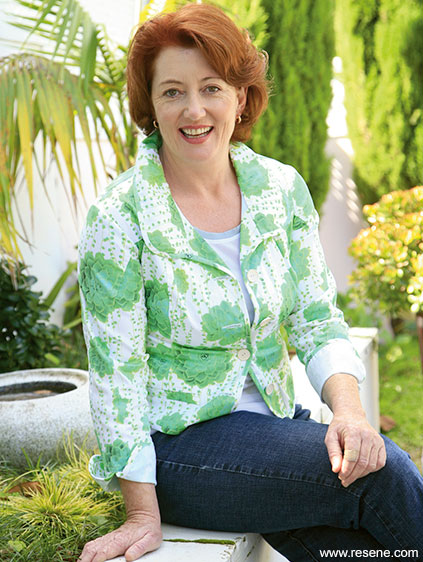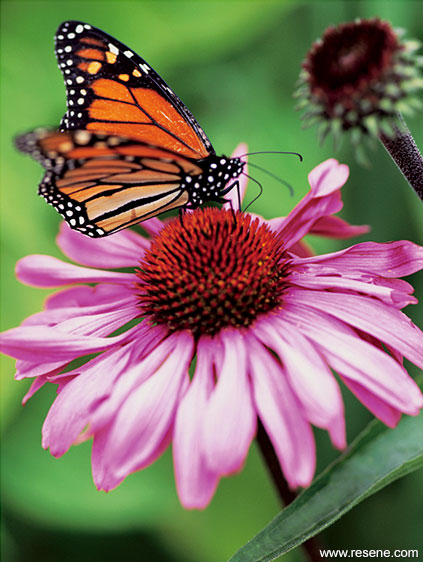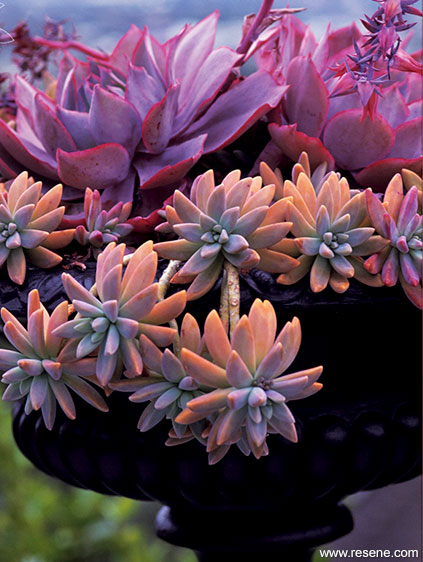From Habitat magazine - issue 07
The ideal garden is happy, healthy, and weed and bug free. All it really takes to keep it that way is a keen eye for detail, says broadcaster and gardening enthusiast Maggie Barry.

There are two ways to create a tidy, harmonious, productive garden. You can employ metres of plastic weed-mat, soak everything with chemical fertilisers, and employ lashings of pesticide.
Alternatively, you can take a more organised approach; plant to suit the conditions, think about mulches and groundcovers, and keep on top of garden pests as they start to appear, rather than struggling with full-blown infestations, afterwards. However, all this doesn’t mean your garden has to be high maintenance, says Maggie Barry. It just means taking time out to keep in touch with the plants, always with timely intervention in mind.
“No garden is completely maintenance-free. Those that come close can tend not to feel like healthy spaces, and in fact often aren’t particularly eco-friendly either,” says Maggie. “I’m thinking of the advent of fortress properties as we demand increased privacy and security. Hedges have given way to walls in many suburbs, so we lose the plants that create habitats for our birds and other animals like hedgehogs, both of which are great for slug and snail control.”
There’s also an impression that hedges are hard work, she says, but with the choice of plants now available, they don’t need to be huge and dusty these days. They can be neat, compact, and only need pruning twice a year. “And they keep us in touch,” says Maggie. “They give us a sense of season and let the invigorating winds blow through.”


One garden element that is currently fashionable – in a trend that has positive eco-spin-offs – is our fascination with water features. Not only do they look good and sound restful, but the birds love them, both for bathing and drinking.
“You know, I once heard that birds are like the French – they need a good drink to wash down the snails,” she laughs.
She’s also an advocate of indicator plants – think of the rose bushes at the end of the grape rows in a vineyard, traditionally used to show when disease was on the way. It depends, though, on what your garden suffers from.
“Auckland’s humidity tends to promote the growth of powdery mildew, and the first to feel it will be violas and pansies. Just make sure you dispose of the sick plants in the rubbish, rather than contaminating the compost heap. In Wellington, on the other hand, my problem is the wind, and hellebores are great for showing when they’re reaching the end of their tolerance.” She also uses plant indicators inside.
“I’m a great believer in houseplants,” she explains. “They take up the carbon dioxide and chemicals such as formaldehyde, filtering and enriching the air. They don’t ask for much. I spend 10 minutes a week on mine and I have more than 30 plants. Impatiens are great for showing when they’re thirsty, so the moment I see them drooping, I know that everything needs the watering can. Cyclamen are a bug magnet and are the first to show it when the bugs come out. At that stage, I plant them indoors.”
The trick, she says, is to make sure you keep tabs on what you planted and when, and when pests and disease have cropped up in the past. To that end, she’s just released Maggie’s Garden Diary 2008. Along with helping you keep life organised, it also encourages you to note garden events, and has offers lots of pointers on when and what to prune, plant, mulch and maintain. “Keep your garden diaried – when did plants flower, when did they get infested, what do you need to look out for next year, so you can get on top of it without having to resort to the spray pack,” she says.
So take a moment as often as you can to enjoy your outdoor spaces. They’ll more than reward you for it!
words: Rachel Macdonald
pictures: Sally Tagg
Search habitat magazine stories
Printed copies of habitat highlights are available from late March 2024 at Resene ColorShops and resellers, while stocks last. You can view back issues of habitat magazine online.
Specifiers:
If you have an idea, project or story that you think would suit habitat, we’d love to hear from you. Please drop us an email with your details and include photos if submitting a project.
Sign up for a DIY card and Save! Australia | New Zealand